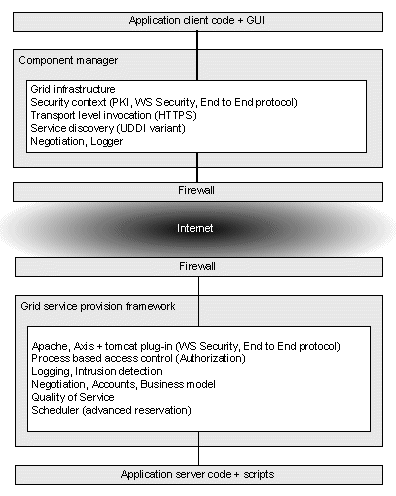Infrastructure
The GEMSS Grid employs a service-oriented client/server architecture (as shown in the figure), and illustrates a client side component manager that contains a number of plug-in Grid modules, and a server side Grid provision framework that is based on Web services and Apache AXIS. GEMSS works in sympathy with Firewalls - there is no need to open special ports through them. Two high performance computing (HPC) resources have been available within GEMSS, one with 64 CPU's (Germany) and one with 16 CPU's (Austria). A basic HTTPS security transport layer is provided for web service invocation, and built on top of this is support for the WS Security standard and a proprietary end-to-end security protocol. A project wide public key infrastructure (PKI) is in place, and this provides X.509 certificates that identify our users. The PKI underpins the WS Security, end-to-end security and authentication aspects within GEMSS. An experimental security logging system acts as a last line of defence. The economic aspects of the GEMSS service also mean that the user must demonstrate the authority to pay for use of the Grid resources. Both aspects are relevant to the Quality of Service (QoS) component that clarifies the contractual responsibilities of client and service provider in running the job. The middleware includes additional QoS features that permit advanced reservation and estimates of job completion time and a compute resource negotiator is available that gives the user freedom to choose the Grid platform on which the job should be run.

GEMSS Employs a service oriented architecture

